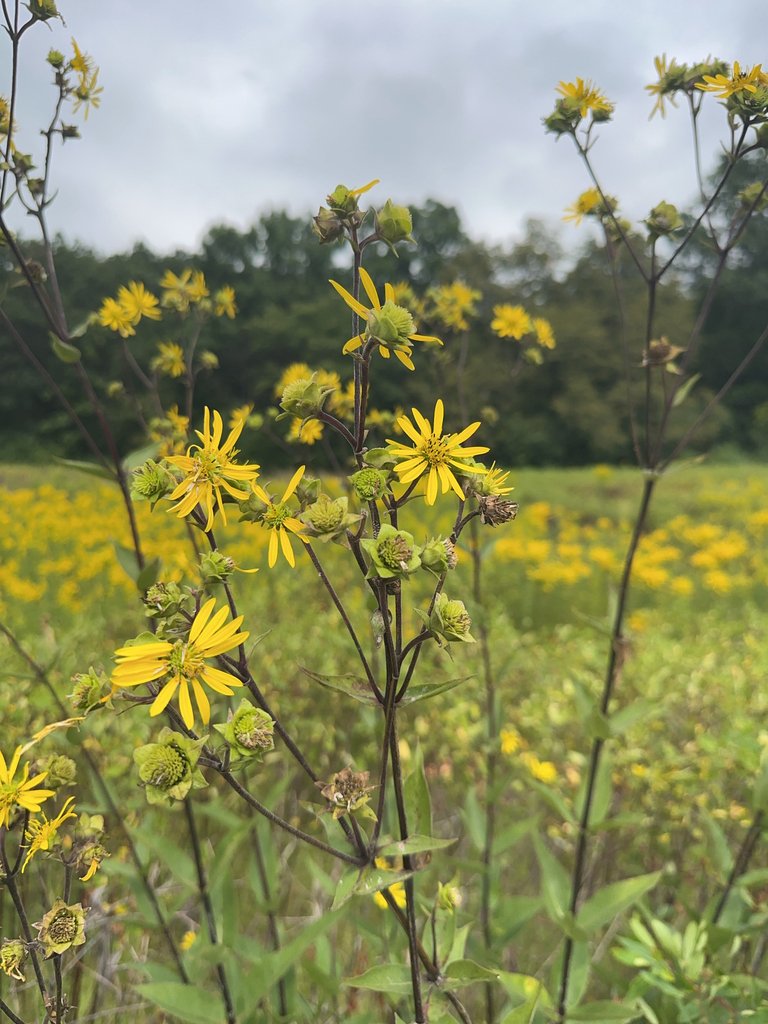 Image 1 of
Image 1 of


Rosinweed
Rosinweed (Silphium integrifolium) is a plant native to central USA and parts of Canada. It grows along roadsides, fields, and prairies with sunflower-like blooms in late summer to fall. Bees and butterflies are attracted to it. The plant typically reaches 2-3 feet in height but can grow up to 6 feet tall. Its sturdy stems keep it upright while other similar plants may bend. The leaves turn around the stem as they grow upward, and small side stems may produce flowers. Rosinweed can grow in various soils with good drainage and full sun, tolerating some light shade. Once established, it can withstand drought. Suitable for natural or native areas, it may be too aggressive for small gardens as it forms clumps without spreading excessively.
Rosinweed (Silphium integrifolium) is a plant native to central USA and parts of Canada. It grows along roadsides, fields, and prairies with sunflower-like blooms in late summer to fall. Bees and butterflies are attracted to it. The plant typically reaches 2-3 feet in height but can grow up to 6 feet tall. Its sturdy stems keep it upright while other similar plants may bend. The leaves turn around the stem as they grow upward, and small side stems may produce flowers. Rosinweed can grow in various soils with good drainage and full sun, tolerating some light shade. Once established, it can withstand drought. Suitable for natural or native areas, it may be too aggressive for small gardens as it forms clumps without spreading excessively.
Rosinweed (Silphium integrifolium) is a plant native to central USA and parts of Canada. It grows along roadsides, fields, and prairies with sunflower-like blooms in late summer to fall. Bees and butterflies are attracted to it. The plant typically reaches 2-3 feet in height but can grow up to 6 feet tall. Its sturdy stems keep it upright while other similar plants may bend. The leaves turn around the stem as they grow upward, and small side stems may produce flowers. Rosinweed can grow in various soils with good drainage and full sun, tolerating some light shade. Once established, it can withstand drought. Suitable for natural or native areas, it may be too aggressive for small gardens as it forms clumps without spreading excessively.
